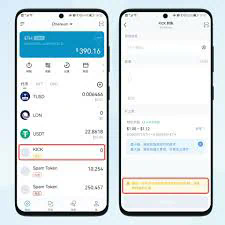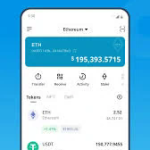# A Comprehensive Guide to Adding Custom Tokens to Coinbase Wallet
Coinbase Wallet is a user-friendly cryptocurrency wallet that allows users to store various digital assets, including cryptocurrencies and tokens. While many users are familiar with standard coins like Bitcoin and Ethereum, there is also a growing interest in custom tokens that operate on these blockchains. This article delves into the process of adding custom tokens to Coinbase Wallet, highlighting essential concepts and providing a step-by-step guide.
## Understanding Cryptocurrency Wallets
Before diving into the specifics of adding custom tokens, it’s essential to understand what cryptocurrency wallets are and how they function. A cryptocurrency wallet is a digital tool that allows users to store, send, and receive cryptocurrencies. These wallets can be software-based, like Coinbase Wallet, or hardware wallets, which offer enhanced security by storing assets offline.
Wallets operate using public and private keys. The public key serves as an address for receiving funds, while the private key enables users to access and manage their assets. Importantly, Coinbase Wallet is a non-custodial wallet, meaning users retain control of their private keys, which enhances security and privacy.
## The Importance of Custom Tokens
Custom tokens are created on a blockchain protocol, typically using standards like ERC-20 for Ethereum. These tokens can serve various purposes, from being part of decentralized applications (dApps) to representing assets in tokenized form, such as real estate or art. The ability to add custom tokens to wallets enhances the versatility of the wallet and allows users to diversify their portfolios.
### Types of Custom Tokens
Custom tokens can be broadly categorized into several types:
1. **Utility Tokens**: These provide access to a product or service within a particular ecosystem or platform. Examples include Basic Attention Token (BAT) and Binance Coin (BNB).
2. **Security Tokens**: Represent ownership or equity in a traditional asset, such as stocks or bonds, often subject to regulation.
3. **Stablecoins**: Pegged to a stable asset, usually fiat currencies, to minimize volatility. Examples include Tether (USDT) and USD Coin (USDC).
4. **Governance Tokens**: Allow holders to participate in decision-making processes within a decentralized network, such as protocols like MakerDAO.
Understanding these categories helps users make informed decisions about which tokens to add to their Coinbase Wallet.
## Prerequisites for Adding Custom Tokens
Before adding a custom token to your Coinbase Wallet, there are some prerequisites to keep in mind:
1. **Coinbase Wallet App**: Ensure you have the Coinbase Wallet app installed on your mobile device (available for both iOS and Android).
2. **Supported Network**: Custom tokens must be compatible with the wallet’s supported networks. Typically, Coinbase Wallet supports Ethereum-based tokens (ERC-20 tokens) and others like Bitcoin (BTC) or Binance Smart Chain (BSC).
3. **Token Contract Address**: You’ll need the intelligent contract address of the custom token you want to add. This information is usually available on the project’s official website or through a blockchain explorer.
## Step-by-Step Guide to Adding Custom Tokens
Now that we have the necessary background, let’s go through the steps to add a custom token to your Coinbase Wallet.
### Step 1: Open the Coinbase Wallet App
Start by launching the Coinbase Wallet app on your mobile device. Ensure you are logged in to your account, and if you have not created a wallet yet, follow the prompts to set one up.
### Step 2: Access the ‘Tokens’ tab
Once inside the app, navigate to the ‘Tokens’ tab at the bottom of the screen. This tab will display all the tokens and cryptocurrencies currently held in your wallet.
### Step 3: Click on ‘Add Tokens’
In the Tokens tab, look for an option that says ‘Add Tokens’ or a ‘+’ symbol. Tapping on this will initiate the process to add a new custom token to your wallet.
### Step 4: Enter the Token Contract Address
You’ll be prompted to enter the token contract address. Copy and paste the address of the custom token from your trusted source. Double-check that the address is correct, as entering an incorrect address could lead to the loss of funds.
### Step 5: Confirm Token Details
After entering the contract address, the app should automatically fetch and display the token’s details, including its name, symbol, and the number of decimals. Verify that all the information is accurate before proceeding.
### Step 6: Tap ‘Add Token’
Once you confirm the token details, tap on the ‘Add Token’ button to finalize the addition. The token should now be visible in your Tokens tab, ready for transactions or further management.
## Troubleshooting Common Issues
While the process of adding custom tokens to the Coinbase Wallet is straightforward, users may encounter a few common issues. Here are solutions to some of these challenges:
### Token Not Visible After Adding
If the token does not appear immediately after adding it, several factors could be responsible. First, ensure that you entered the correct contract address. If the address is valid and the token still does not appear, try refreshing the app or waiting a few moments.
### Incorrect Token Details
Sometimes, the app may fetch incorrect token details. If you notice discrepancies, double-check the contract address and consider manually entering the token name and symbol if the option is available.
### Network Compatibility Issues
Ensure that the custom token is compatible with the networks supported by Coinbase Wallet. Adding tokens from unsupported networks will not work, and you may need to use another wallet that supports these tokens.
## Security Best Practices for Custom Tokens
Adding custom tokens to your Coinbase Wallet is straightforward, but it’s essential to prioritize security. Here are some best practices to consider:
### Using Trusted Sources for Token Information

When acquiring token contract addresses, always rely on trusted sources. This includes the project’s official website, whitepapers, or reputable token listing services like CoinGecko or CoinMarketCap.
### Protecting Your Private Key
Never share your private keys or recovery phrases with anyone. This information is essential for accessing and managing your wallet and should be kept confidential.
### Regularly Monitor Your Wallet
Keep an eye on your wallet for unauthorized transactions or unusual activity. Regular monitoring can help you catch issues early and take action if necessary.
### Updating Your Wallet App
Ensure that your Coinbase Wallet app is updated to the latest version. Software updates not only improve functionality but also enhance security features that protect your assets.
## Conclusion
Adding custom tokens to your Coinbase Wallet is a valuable skill that enhances your cryptocurrency experience. Understanding the different types of tokens, the importance of cryptocurrency wallets, and the process to add tokens is crucial in today’s digital asset landscape. As more projects develop custom tokens, having the ability to manage these assets securely and effectively will empower you to diversify your investment portfolio and participate in the evolving world of blockchain technology. By following best practices and maintaining awareness of security measures, you can confidently navigate the nuances of adding and managing tokens in your Coinbase Wallet.


